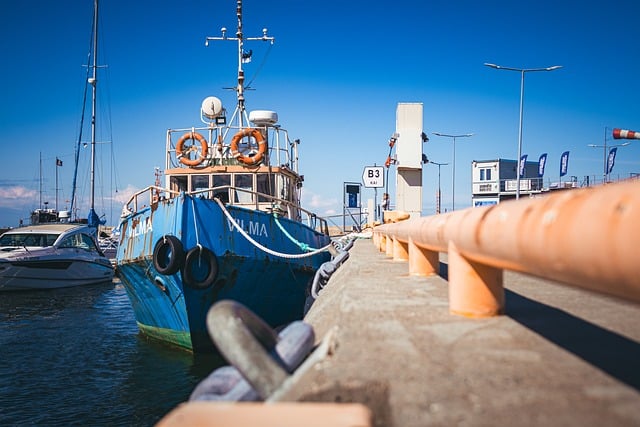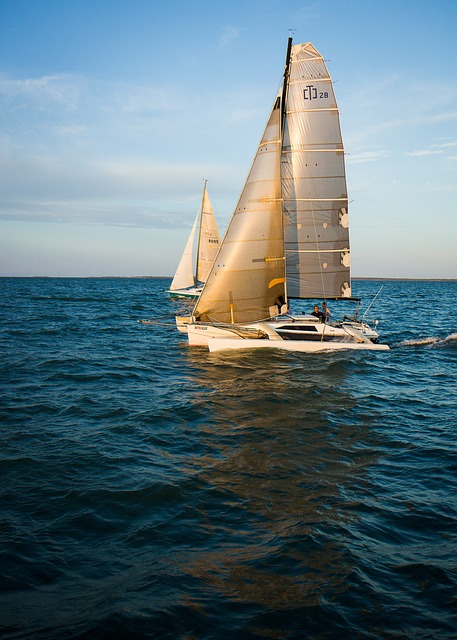When choosing a marine battery for nautical endeavors, it's crucial to consider the performance and suitability of both lithium and lead-acid technologies under cold weather conditions. Lithium marine batteries stand out due to their high energy density, lighter weight, and long service life, which are particularly advantageous in vessels with limited space and mass. They offer consistent voltage across a wide range of temperatures, ensuring sustained power during long voyages or when operating in freezing environments. Unlike lead-acid batteries, lithium options do not require external heating and can function effectively without the reduced capacity issues that arise with lead-acid batteries below 0°C (32°F). While lithium marine batteries may have a higher initial cost compared to traditional lead-acid ones, their longer lifespan and improved efficiency lead to long-term savings. This makes lithium batteries a more economical choice, especially for those who frequently navigate in cold climates where reliability is paramount. Proper care and maintenance are essential for both types of batteries to ensure optimal performance and safety in marine conditions. Ultimately, lithium marine batteries represent a sound investment for their cold-resistant capabilities and overall cost efficiency over time.
Navigating the high seas presents unique challenges, with cold weather performance being a critical aspect for marine batteries. This article delves into the comparative resilience of lithium and lead-acid batteries under frigid conditions. We will explore their durability, energy densities, charge retention efficiencies, and safety considerations, offering a comprehensive analysis to aid in selecting the most suitable marine battery for your voyages. Join us as we compare these two technologies and provide insights into the financial implications of each option, ensuring your vessel’s power source is prepared for every maritime adventure.
- Understanding Marine Battery Options: Lithium vs. Lead-Acid Technologies
- Durability in Harsh Conditions: How Marine Batteries Face Cold Weather
- Lithium Battery Advancements: High Performance in Freezing Temperatures
- Lead-Acid Battery Challenges: Cold Weather Impact on Traditional Marine Batteries
- Energy Density and Power: Comparing the Capacities of Lithium vs. Lead-Acid Marine Batteries
- Charge Retention and Efficiency: Assessing Lithium and Lead-Acid Performance in Cold Weather
- Safety Considerations: Handling and Maintaining Lithium and Lead-Acid Batteries in the Cold
- Cost Analysis: Evaluating the Financial Implications of Choosing Lithium Over Lead-Acid for Marine Use
Understanding Marine Battery Options: Lithium vs. Lead-Acid Technologies

When considering the best marine battery options for your maritime adventures, it’s crucial to evaluate the performance characteristics of lithium versus lead-acid technologies. Lithium batteries have emerged as a popular choice in recent years due to their high energy density, lightweight design, and long service life. Unlike traditional lead-acid batteries, lithium variants can deliver consistent power output even in cold weather conditions, which is essential for maritime applications where reliability and longevity are paramount. Their ability to maintain a stable voltage under varying temperatures allows for better performance over extended periods, particularly on long voyages or during the colder seasons. Additionally, lithium batteries are known for their low self-discharge rate, meaning they retain charge longer without the need for frequent recharging.
Lead-acid marine batteries have been the go-to option for a long time, but they present different characteristics in cold weather scenarios. These batteries can be less efficient when temperatures drop, as the chemical reactions within the lead plates slow down, leading to reduced capacity and shorter operational life. This performance degradation can be problematic for boat owners who frequent colder climates or experience seasonal temperature fluctuations. Furthermore, lead-acid batteries tend to be heavier, which can affect the overall balance and performance of a vessel. However, they are often more affordable upfront, and their reliability is well-established in many boating communities, making them a preferred choice for some mariners despite their weight and cold-weather limitations. When selecting a marine battery, it’s important to consider the specific needs of your vessel, the frequency of use, and the environmental conditions you’ll encounter to make an informed decision between lithium and lead-acid technologies.
Durability in Harsh Conditions: How Marine Batteries Face Cold Weather

When the mercury dips and cold weather sets in, the reliability of a marine battery becomes paramount for seafarers and vessel operators alike. Unlike their counterparts used in automobiles, marine batteries are engineered to withstand the harsh elements that accompany nautical endeavors. These batteries must endure not only the biting cold but also the corrosive saltwater environment, as well as the vibrations from engines and rough seas. Lithium batteries, with their lithium iron phosphate (LiFePO4) cells, exhibit superior performance in cold weather compared to traditional lead-acid batteries. The chemical composition of lithium batteries allows them to maintain a stable charge at low temperatures, ensuring consistent operation when the temperature hovers around or even below the freezing mark. In contrast, lead-acid batteries can suffer from reduced capacity and increased self-discharge in colder conditions. The sulfuric acid within these batteries can become viscous, sludgy, and less effective at delivering power. As a result, marine battery users often prefer lithium options for their durability and dependability under the rigorous demands of cold weather maritime applications.
Lithium Battery Advancements: High Performance in Freezing Temperatures

In the realm of energy storage, lithium batteries have made significant strides, particularly in maintaining high performance even under the challenges posed by cold weather conditions. Traditionally, lead-acid batteries have faced difficulties operating at freezing temperatures, often experiencing reduced capacity and increased susceptibility to damage. In contrast, advancements in lithium battery technology have led to their superiority in cold environments, making them a more reliable option for applications where consistent power is essential, such as marine batteries used on vessels navigating the colder waters. These improvements are attributed to their chemical composition and design, which allow them to function effectively even when external temperatures dip below zero degrees Celsius. The lithium-ion polymer batteries, for instance, are engineered with a robust electrolyte solution that doesn’t congeal as traditional lead-acid electrolytes do in cold weather. This ensures that the batteries retain their full capacity without the risk of internal pressure buildup from a frozen electrolyte, which is a common issue with lead-acid batteries and can lead to leakage or rupture. As a result, lithium batteries are becoming increasingly popular for marine applications, where reliability in harsh conditions is paramount. Their ability to deliver consistent power output across a wide range of temperatures makes them an attractive alternative to the less reliable lead-acid options that have historically dominated this market segment.
Lead-Acid Battery Challenges: Cold Weather Impact on Traditional Marine Batteries

Lead-acid batteries have been a mainstay in marine applications, providing power for everything from starting engines to running onboard electronics. However, when temperatures plummet, these traditional batteries can face significant challenges. The chemical composition of lead-acid batteries inherently makes them less efficient in colder environments. The performance degradation is due to the viscosity of the electrolyte solution, which thickens as it cools. This thickening reduces the ions’ mobility, leading to a decrease in battery capacity and an increase in internal resistance. As a result, the ampere-hour (Ah) output is compromised, which can leave boaters with insufficient power for critical operations when they need it most. The reduced charge acceptance also means that lead-acid batteries take longer to recharge after being discharged, or they may not accept a charge at all if the temperature falls below their operational threshold. For marine applications where reliability is paramount, this can pose a significant risk, potentially leaving vessels without essential power in some of the most demanding conditions. It’s crucial for users to be aware of these limitations and to consider alternative energy solutions that offer better performance in cold weather, such as lithium batteries specifically designed for marine environments.
Energy Density and Power: Comparing the Capacities of Lithium vs. Lead-Acid Marine Batteries

When assessing the performance of marine batteries in cold weather conditions, energy density and power output are critical factors to consider, especially when comparing lithium vs. lead-acid technologies. Lithium marine batteries typically exhibit superior energy density compared to their lead-acid counterparts. This means they can store more power in a given volume or weight, which is particularly advantageous for applications where space and mass are at a premium on boats. In contrast, traditional lead-acid marine batteries have a lower energy density, necessitating more space to achieve the same energy capacity. For instance, lithium ion marine batteries can provide upwards of 120 watt-hours per kilogram, which is significantly higher than the 35-45 watt-hours per kilogram that lead-acid batteries offer. This translates to a more efficient power source for electronic devices, lighting, and other electrical systems on board, even when temperatures plummet.
Furthermore, the ability of lithium marine batteries to maintain their energy density in cold environments sets them apart from lead-acid batteries. Lead-acid batteries can suffer from reduced performance and capacity retention at low temperatures, often requiring supplemental heating to function optimally. Lithium batteries, on the other hand, are designed to endure a wide range of temperatures without significant loss in power output. As a result, lithium marine batteries are increasingly favored for their reliability and consistent performance across various weather conditions, making them a robust choice for marine applications where energy density and power are key concerns.
Charge Retention and Efficiency: Assessing Lithium and Lead-Acid Performance in Cold Weather

In cold weather conditions, both lithium and lead-acid batteries face challenges that can affect their performance, particularly in terms of charge retention and efficiency. Lithium batteries generally exhibit superior performance in low temperatures compared to their lead-acid counterparts. This is due to the chemistry of lithium cells, which are less susceptible to the cold. Lithium batteries maintain a stable voltage even at low temperatures, ensuring consistent energy delivery. Their charge retention remains relatively robust, even after prolonged exposure to cold weather, making them an excellent choice for marine applications where vessels may encounter varied climatic conditions.
On the other hand, lead-acid batteries tend to struggle in colder environments, as their chemical composition is more affected by low temperatures. The internal pressure of a lead-acid battery can increase when exposed to cold weather, which can lead to reduced efficiency and shorter charge retention times. This sensitivity can result in a noticeable drop in performance, with the battery holding less charge and recovering less energy when subjected to repeated discharge/recharge cycles in cold conditions. Despite advancements in lead-acid technology, such as AGM (Absorbed Glass Mat) or gel cell designs, which offer improved cold-weather performance, lithium batteries are still often the preferred choice for applications requiring consistent energy delivery, like marine settings where temperature fluctuations are common.
Safety Considerations: Handling and Maintaining Lithium and Lead-Acid Batteries in the Cold

When operating or storing lithium and lead-acid batteries, particularly marine batteries, in cold environments, it’s crucial to consider safety and performance. Lithium batteries have a higher energy density compared to lead-acid batteries, making them more suitable for applications where space and weight are at a premium. In cold conditions, lithium batteries can maintain their charge more effectively than lead-acid varieties. However, it’s important to protect them from freezing temperatures as prolonged exposure to extreme cold can impair their function. For lithium batteries, ensure they are stored in an environment where the temperature remains above their lower rating threshold; typically, above 10°C (50°F) is recommended. If used in a marine setting, it’s vital to insulate the battery and keep it warm through proper ventilation to prevent condensation, which can lead to short-circuiting and potential danger.
Lead-acid batteries are known for their robustness and reliability in cold weather, but they require special attention too. These batteries can become sluggish when temperatures drop below 0°C (32°F), and their performance may degrade significantly. To maintain lead-acid marine batteries in the cold, it’s advisable to keep them charged and in a dry, temperate environment to prevent any liquid electrolyte from freezing or leaking due to expansion. Proper maintenance includes regularly checking the water levels and ensuring the battery is fully charged before exposure to cold weather. Both types of batteries should be handled with care, as extreme cold can affect their lifespan and efficiency, and safety precautions must always be followed to prevent hazards such as short-circuiting or fire.
Cost Analysis: Evaluating the Financial Implications of Choosing Lithium Over Lead-Acid for Marine Use

When considering the adoption of a marine battery, the cost analysis between lithium and lead-acid technologies is a critical factor for boat owners. Lithium batteries, such as those powered by lithium iron phosphate (LiFePO4), have gained popularity in recent years due to their superior performance in cold weather conditions compared to traditional lead-acid batteries. While initial costs for lithium marine batteries may be higher, the long-term financial implications favor lithium over lead-acid. This is primarily due to the longevity and efficiency of lithium batteries, which can result in fewer replacements over time, thus offering a cost-effective solution in the long run.
In cold weather environments, lead-acid batteries tend to struggle with performance, often requiring maintenance to function optimally. Their ability to hold a charge diminishes significantly at lower temperatures, necessitating more frequent charging cycles and shorter operational lifespans. Conversely, lithium marine batteries are designed to maintain their performance in cold weather, ensuring consistent power output regardless of the temperature. This reliability not only ensures that navigation and onboard systems remain operational but also means that boat owners can avoid the added expense of jump-starting or replacing batteries prematurely. When evaluating the total cost of ownership for a marine battery, it’s clear that lithium options, though initially pricier, offer a more economical solution over their lead-acid counterparts, especially in environments where cold weather is prevalent.
When braving the icy waters, selecting the right marine battery is paramount for uninterrupted power and safety. The article has explored the stark differences between lithium and lead-acid batteries, particularly their performance in cold weather conditions. Lithium batteries have emerged as a robust alternative to traditional lead-acid options, offering superior energy density, charge retention, and efficiency even when temperatures plummet. While lead-acid batteries face notable challenges in such environments, lithium’s advancements ensure consistent power output, making them a more reliable choice for marine applications during the colder months. Additionally, the cost analysis reveals that despite the initial investment, lithium batteries can offer long-term savings and reduced maintenance concerns. In conclusion, when considering the demands of marine environments and the need for high performance in cold weather, lithium batteries stand out as a superior option, offering enhanced safety, durability, and overall value over lead-acid marine batteries.
